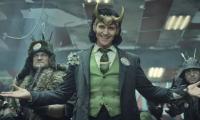After Gorbachev assumed power in the Soviet Union in March 1985, it took him nearly a year to consolidate his position and by early 1986 he appeared to be fully in command. An open dispute occurred between members of the leadership at the 27th Congress in Feb-March 1986.
It was Boris Yeltsin who criticized the way the central committee of the party was functioning. Ligachev was running the CC apparatus at that time. Two rival camps emerged in the party and Gorbachev had to perform a balancing act between them. It was not immediately clear how things within the party would shape up but later on when the documents of the 27th Congress became available to the public, the Soviet people knew Yeltsin had criticised leadership privileges, and Ligachev – the CC secretary – had refuted Yeltsin’s claims.
The initial stage of the reform programme propounded by Gorbachev had a near unanimous support within the party but now in the 27th Congress it became clear that the path ahead would be fractious. The prescriptions of reform that Gorbachev had supported, became increasingly radicalized. Gorbachev had not taken up the position of chairman of the presidium of the Supreme Soviet. The Supreme Soviet was the top legislative body in the Soviet Union just like parliament in other countries consisting of two chambers: the Soviet of the Union (lower house), and the Soviet of Nationalities (Upper House).
A joint session of both houses used to elect the presidium which acted on parliament’s behalf when the Supreme Soviet was not in session. The presidium had nearly 40 members with representation from all of the 15 republics (provinces). The head of the Supreme Soviet also served as head of state but he was just like a ceremonial president. Before Gorbachev, his three predecessors had kept the position of party chief and head of state in one office. Gorbachev gave it to Gromyko who became the new ceremonial head of state.
Since Gorbachev wanted to introduce quick reforms in the Soviet foreign policy too, Shevardnadze the new foreign minister took up the task of dismantling the cold-war policies. These changes in foreign policies resulted in voluntary reduction of Soviet influence in Eastern Europe. Gorbachev wanted to concentrate on the reorganization of the party itself so he preferred not to be the head of state, at least for the first three years of his rule. He also started public walk-abouts, apparently to seek advice and make contact with the Soviet public. He wanted to show that he was in contact with the people of his land, unlike his predecessors who had mostly kept aloof.
By the end of 1986, Gorbachev was openly talking about some structural changes and the basic consensus upon which the moderate reform coalition had come together began to fray. Initially, there was an agreement about the traditional nature of the problems and remedies. As Gorbachev freed the press, widespread rings of corruption came to surface in many republics from Central Asia to Moldavia. The free Soviet press now could highlight this corruption and its roots in the domination of party life by family groups. The press informed the people that there were locally-based personalized networks which dominated party life and local favouritism prevailed.
While some other senior leaders such as Ligachev did not like it, Gorbachev encouraged the press to fearlessly expose the shortcomings of the party administration at all levels. For example, the first secretary of the Tajik communist party lost his seat after charges of corruption in 1985. Gorbachev also attacked formalism of speeches in the communist party at all levels and the decisions that the top office holders made; he called them ritualistic meetings – and he was right in his assertions. Then the press started exposing the stage-managing of meetings which avoided awkward questions.
Gorbachev wanted all meetings and sessions to be full of pointed criticism and self-criticism with in-depth analysis of the shortcomings of the party and its leaders. In the 27th Congress of the party Gorbachev criticized excessive organization and the habit of speaking vaguely and window-dressing. He encouraged a new style of party leadership. A former leader of the Uzbek party Sharaf Rashidov was severely criticized. He had ruled over Uzbekistan for nearly 25 years as the Uzbek party chief and died in 1983. But after his death he was disgraced as a corrupt communist leader.
It was interesting to read ‘Pravda’ in those days. This was a newspaper which used to be an official mouthpiece of the Communist Party, but now with new freedom, it was publishing corruption scandals from across the Soviet Union. Mostly these stories were from Central Asia, but also included western republics such as Belorussia and Ukraine. Mostly they talked about the failure of first secretaries to provide adequate leadership. After the 27th Congress, there was a plenum of the party central committee (CC) in June 1986, Gorbachev once again criticized the prevailing view that the work should continue as before.
In most news magazines and papers at that time, there were regular reports about fictitious projects and misappropriation of funds. The Soviet society resounded with such scandals that amounted to a condemnation of the party’s organizational culture. At the 27th Congress, over 40 percent of full members were elected for the first time. This was the highest turnover rate since 1961. More than half of the central-committee department heads were replaced. By the end of 1986, party leaders in five republics had to quit. The new party rules adopted at the 27th Congress allowed non-members to participate in discussions about individual candidates for entry to the party.
That’s how the door opened for non-members to more actively participate in such matters and this facilitated more popular involvement. Ukrainian leader Shcherbitskii expressed reservations about responsible officials being subject to criticism from below. Many other party leaders felt uncomfortable with labelling and personal attacks, and even shouting at them; as this was all unprecedented in living memory. Perhaps the most important new rule adopted at the Congress was the provision for criticism and self-criticism. This changed the entire dynamics of party ethos and work culture. Then there were rules to prevent one-man dominance and family group controls.
Still Gorbachev kept calling the party a healthy organism which was perfecting its style and methods of work. I remember in 1986, a senior communist leader from Pakistan, Dr Aizaz Nazeer visited Moscow and he was full of questions for his host party officials about the perestroika or reconstruction in the Soviet Union. A senior Soviet party official Khlebnikov, responding to Dr Aizaz Nazeer in my presence, quoted Gorbachev’s words that the party was healthy and perfecting its style. The guest nodded in affirmation and repeated the same when he met some more Pakistani students in Moscow.
At the same time, Gorbachev also introduced his economic programme of uskorenie – meaning, a faster pace of development. There were three more active personalities that were spearheading more radical and far-reaching changes: Yakovlev, Yeltsin, and Shevardnadze. Yakovlev had been the Soviet ambassador to Canada for nearly a decade and was much impressed by the market economy there. In 1983, Gorbachev had visited Canada as the Soviet agriculture minister and struck a chord with Yakovlev about the need for change in the Soviet economy and society. Gorbachev brought him to the Politburo to strengthen his reform agenda.
To be continued
The writer holds a PhD from the University of Birmingham, UK and works in Islamabad.
Email: mnazir1964@yahoo.co.uk
As usual, any such deal, aiming to resuscitate ailing economy, brings to fore urge and resolve to halt further...
A representational showing sticky notes on a board. — Unsplash/FileThere are some common themes from the lives...
Whether the Daanish Schools effort has been able to live up to its principles or not may be debatable
According to the federal government, last year 653,100 people experienced homelessness on a single night in America
Another advantage for Pakistan is the enhanced teledensity and internet penetration
Both media spheres need to dovetail in amplifying the urgency of addressing climate change at the local, national, and...







